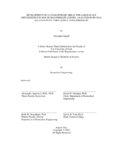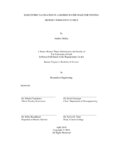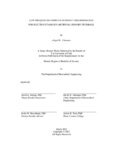TO
1 - 25 of 6
| Creator | Title | Description | Subject | Date | ||
|---|---|---|---|---|---|---|
| 1 |
 | Ingold, Alexander | Development of a Utah optrode array for large scale optogenetics in non-human primate cortex: analysis of spatial excitation pattern using C-FOS expression | A central goal in neuroscience is to understand how neural circuits generate the computations that underlie neuronal responses, sensory perception, and behavior. This requires manipulating their activity and determining the results of these manipulations. Optogenetics is a versatile laboratory techn... | 2022 | |
| 2 |
 | Gilbert, John | A novel tool to capture neural activity across an entire brain using C-FOS as an indicator | Immunohistochemical staining for the expression of the immediate early gene c-Fos is a powerful tool to measure neuronal activation of neurons across an entire brain. The results of c-Fos immunostaining are often quantified by counting the number of immunolabeled cells in a region of interest (ROI) ... | Brain - Localization of functions - Research; Brain - Physiology - Research; Brain mapping - Research; Memory - Research; Mice as laboratory animals - Research; Brain activity; Immunohistochemical staining | 2016-05 |
| 3 |
 | Gajiwala, Snehal | Determining the variability of depressive brain circuitry among healthy subjects for deep brain stimulation | Deep Brain Stimulation (DBS) is being evaluated to treat Treatment-Resistant Depression, though it has shown mixed results. We believe that variability within the fiber tracts of the brain may account for these outcome differences. In this study, we attempt to characterize this potential variation.... | Brain stimulation - Therapeutic use - Research; Depression, Mental - Treatment - Research; Deep brain stimulation; Depressive brain circuitry; Fiber tracts; Tractography | 2016-05 |
| 4 |
 | Sedley, Andrew | Egocentric Navigation in a Morris Water Maze for Testing Memory Formation in Mice | Mouse models are crucial to understanding not only sensory and cognitive neurological processes, but also diseases, disabilities, and responses to pharmacological or surgical treatments. Behavioral tests are essential assets in the description of these models. The Morris Water Maze is a common behav... | 2018 | |
| 5 |
 | Novy, Jenna | Selective and Localized Marking of Activated Dendritic Spines Using a Novel Genetic Construct, Slayr | The brain's ability to store memory is as remarkable as it is complex. The mechanism behind memory storage is still not fully understood and has become an essential question in the neuroscience field. Long-term memories are thought to form via the strengthening of specific connections between neuron... | 2020 | |
| 6 |
 | Citterman, Abigail R. | Low frequencies improve intensity discrimination for electrocutaneous artificial sensory feedback | The current standard of care for those living with upper-limb loss is unsatisfactory, with up to 50% of amputees abandoning their prostheses, citing unintuitive use and a lack of sensory feedback as critical factors. Electrocutaneous stimulation uses electrodes on the skin to evoke tactile sensation... | 2022 |
1 - 25 of 6
